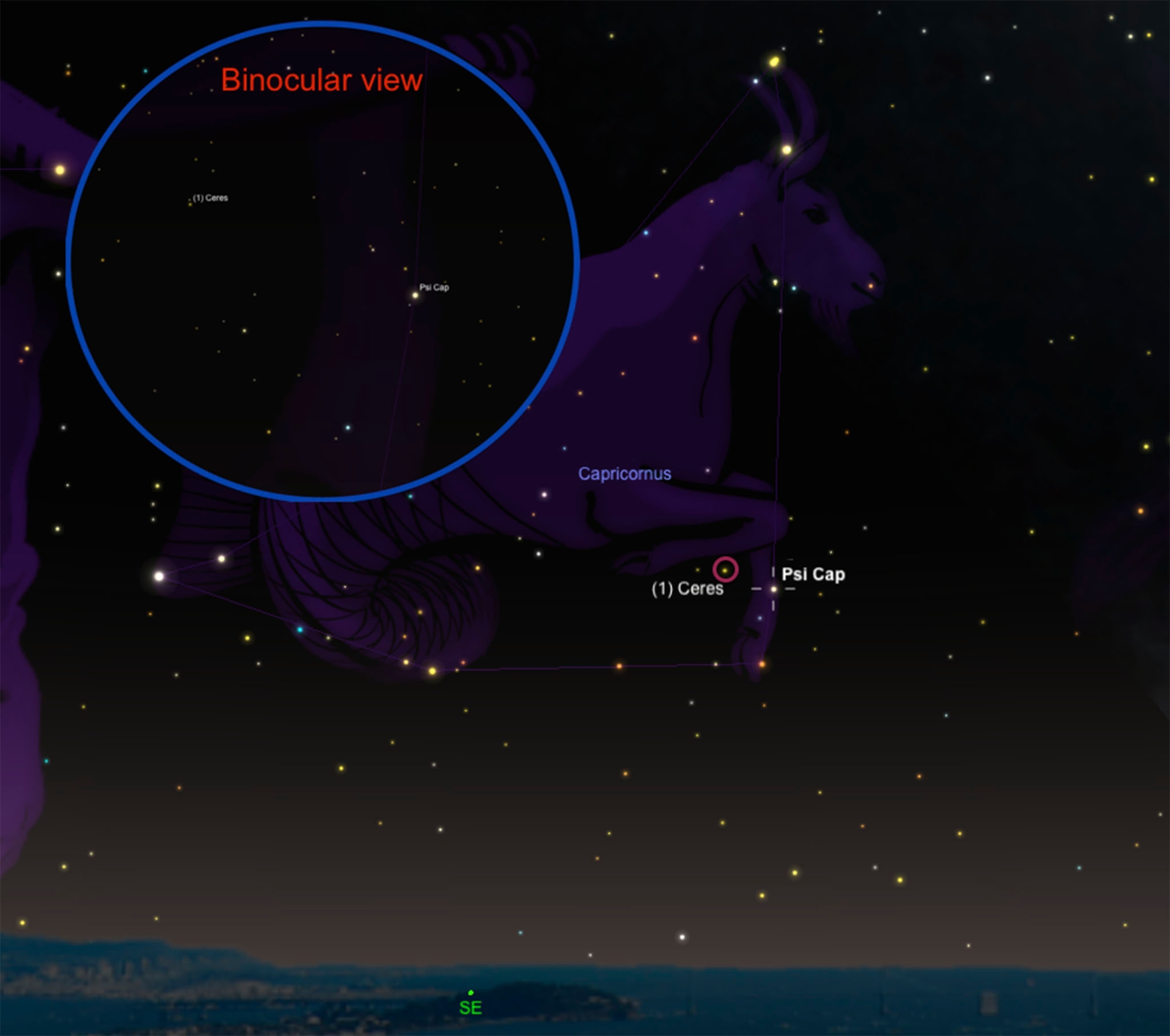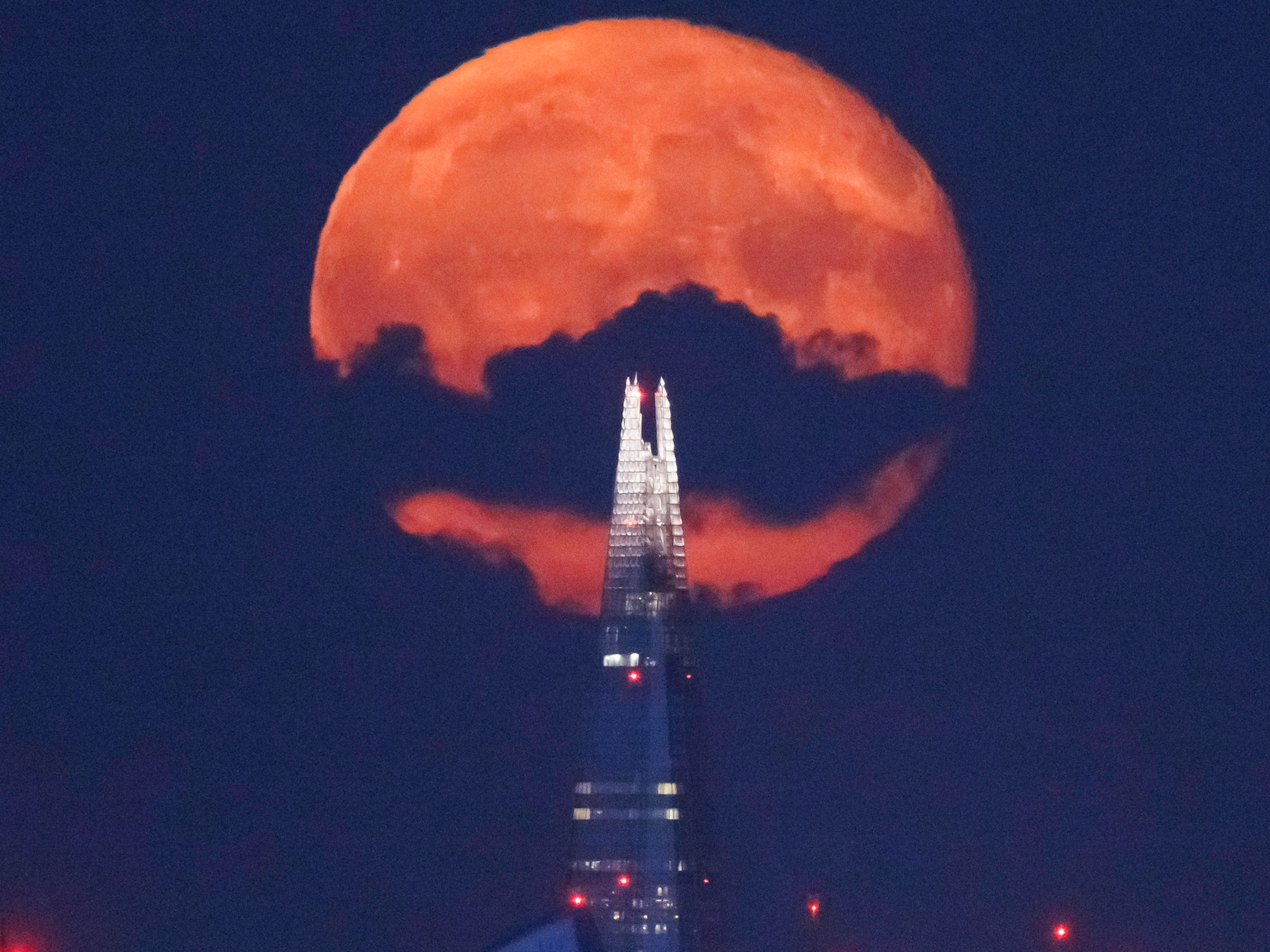
Space in Motion: Watch Gorgeous GIFs of Mars Sunset, Spinning Giant Asteroid
Two of this week's most intriguing views of space combine NASA images into animated form.
NASA spacecraft recently beamed back stunning images that, when combined, bring to life two neighboring alien worlds. While Mars delights us with a surprising blue sky, Ceres continues to perplex us with its bizarre bright blotches.
Martian Sunset Glory
This stunning view of the sun setting over the rim of Gale crater on Mars was captured by NASA’s Curiosity rover on April 15. This was the 956th Martian day the rover has spent exploring the red planet.
Why does the sun look so small? Mars is farther from the sun than Earth is, making the sun appear only about two-thirds as big as it is from our planet.
You may notice the blue-tinged colors of the sunset sky in the animation—this looks similar to what the human eye would see on Mars. The yellow and red colors in sunlight traveling through the Martian atmosphere are scattered more than the blue part of the spectrum is by all the dust particles floating around and this effect is magnified at sunset. So any future Martian visitor would soak in a sunset that would be tinged blue.
Here on Earth, we can see a similar yet reversed effect playing out with our own eyes. When we look at the full moon rising or a setting sun, we can see their light gets scattered by suspended dust particles in our planet’s atmosphere and this makes the light appear more orange-red.
The more dust or pollutants there are floating about, the moonlight or sunlight shifts more towards the darker red part of the spectrum. This effect is most pronounced when the moon or sun is closest to the horizon, since the incoming light has to travel through the thickest column of Earth’s atmosphere.
Curiosity snapped a quick series of shots of the sinking sun over seven minutes using one of the cameras on top of its mast—its left "eye."

As Ceres Turns
NASA’s Dawn spacecraft has now gone into its first orbit around the giant asteroid (or dwarf planet) Ceres. On May 4, Dawn captured this new, high-resolution sequence of breathtaking images from a distance of only 8,400 miles (13,600 kilometers), revealing an area 0.8 mile wide (1.3 kilometers) in each pixel.
The now famous, yet still mysterious, bright spots can now clearly be to lie nestled within a crater in the northern hemisphere of the dwarf planet’s surface.
"Dawn scientists can now conclude that the intense brightness of these spots is due to the reflection of sunlight by highly reflective material on the surface, possibly ice," says Christopher Russell, principal investigator for the Dawn mission from the University of California, Los Angeles in a press statement.
Ceres—the largest known space rock in the asteroid belt—is also visible to backyard sky-watchers right here on Earth.

Ceres can now be spotted sailing through the zodiacal constellation Capricornus, the sea goat. Ceres orbits the Sun in the asteroid belt, so it’s located between Mars and Jupiter, more than 200 million miles (350 million kilometers) from Earth. Best seen in the pre-dawn hours low in the southeastern horizon, this 560-mile-wide (900 kilometers) chunk of rock will be visible with binoculars and small telescopes as small faint 8.6 magnitude star-pole object.
You can track it down more easily thanks to its current close flyby of the star Psi Cap, faintly visible to the naked eye. The two objects this week are separated by about 2 degrees, equal to about four lunar disks.
The best way to know for sure you've snagged this Texas-sized space rock is by checking your views from night to night to see its movement in front of the background star field.
Follow Andrew Fazekas, the Night Sky Guy, on Twitter, Facebook, and his website.





